Avalanche warning signs: pictograms to replace flags
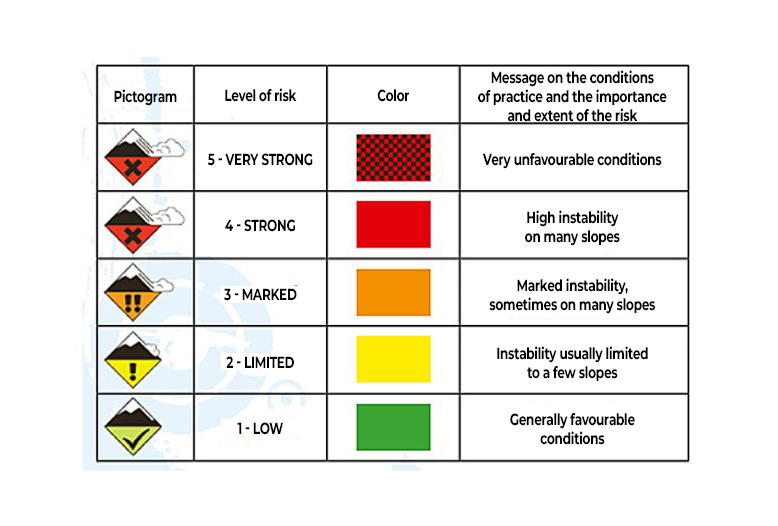
This winter, new pictograms and standard messages are appearing in winter sports resorts, to better inform off-piste enthusiasts of the avalanche risk levels estimated by Météo France. Smartphone applications and digital screens will gradually replace flags.
Every season, mountain professionals are keen to inform skiers and snowboarders about avalanche risks. The challenge is to provide accurate, reliable and understandable information, in the right place at the right time, to warn off-piste enthusiasts in the event of snowpack instability.
It’s now easier thanks to new pictograms formalized at the end of 2016 under the aegis of AFNOR. Each flag symbolizes one of the five levels of avalanche risk (very high, high, marked, limited, low) set at European level, compared with just three flags at present. This European harmonization was necessary because of the large number of foreign visitors to our resorts, especially in areas that straddle several countries.
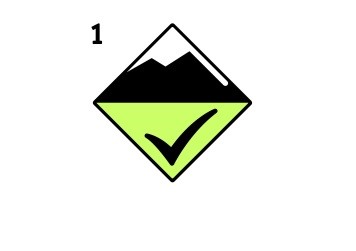
Low
Conditions generally favorable.
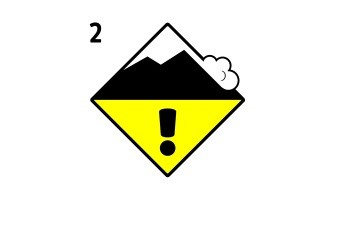
Limited
Instability mostly limited to a few slopes.
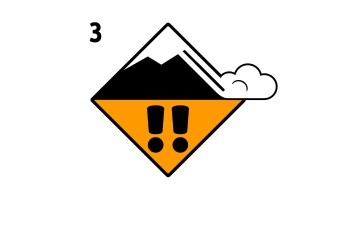
Tagged
Marked instability, sometimes on many slopes.

Fort
Strong instability on many slopes.
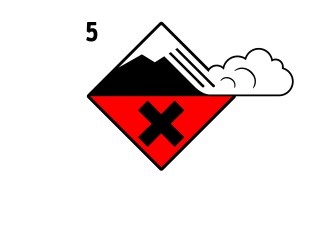
Very strong
Very unfavorable conditions.
The pictograms are color-coded and provide clear information on the importance and extent of the risks involved. They have also been translated into English, German, Italian, Catalan and Dutch, and will be available on the resorts’ smartphone applications, social networks and information screens at the foot of the lifts.
The end of avalanche flags
” The three current avalanche flags – yellow, yellow checkerboard and black, black – can be used for another three years, before being replaced by five pictograms integrated into more modern media,” explains Serge Riveill, project manager for Domaines Skiables de France. ” Traditional signage will still be possible, but resorts concerned by avalanche problems will seize the opportunity of digital technology to better disseminate this important information to off-piste enthusiasts,” he adds. The project’s authors hope to raise skiers’ awareness: ” Risk 3, which everyone knows in the form of the yellow and black chequered flag, was too commonplace,” explains Serge Riveill. ” Over the last ten years, almost half of all off-piste accidents have occurred during a risk 3 episode. The new pictogram, with its two exclamation marks, is more eye-catching. “hopes the AFNOR commission member.
Initiated by Domaines Skiables de France and ANMSM (Association Nationale des Maires de Stations de Montagne), the project was carried out in less than three months by a working group led by AFNOR, an organization specializing in voluntary standards, and comprising representatives of resort mayors, Météo France, government representatives and mountain professionals.
This information system has already been tested in stations
[1]
and on social networks among a sample of around 1,500 people from February 15 to April 15, 2016. 75% of those questioned found the system easier to read than the signage previously used.
> Buy the AC S52-092 document, which details the entire information on avalanche risk
About AFNOR
AFNOR is the French reference organization for voluntary standards. It manages the collection of existing documents and coordinates the work of interested parties in the creation and revision of standards, as well as in the identification of subjects that could provide the basis for the development of new ones. Launched on the initiative of market players, a voluntary standard is a reference framework designed to provide guidelines, technical or qualitative prescriptions for products, services or practices serving the general interest. Anyone can participate in its creation, and any organization may or may not use and refer to it. This is why the standard is called voluntary. As coordinator of standardization in France, AFNOR has one ambition: to contribute to the dissemination of best practices and effective solutions, for the benefit of all.
[1] The 8 pilot resorts were : La Plagne, Les Ménuires, Les Grands Montets (Chamonix), Le Brévent (Chamonix), Châtel, Le Corbier (Les Sybelles), Saint-Jean d’Arves (Les Sybelles), Montgenèvre.